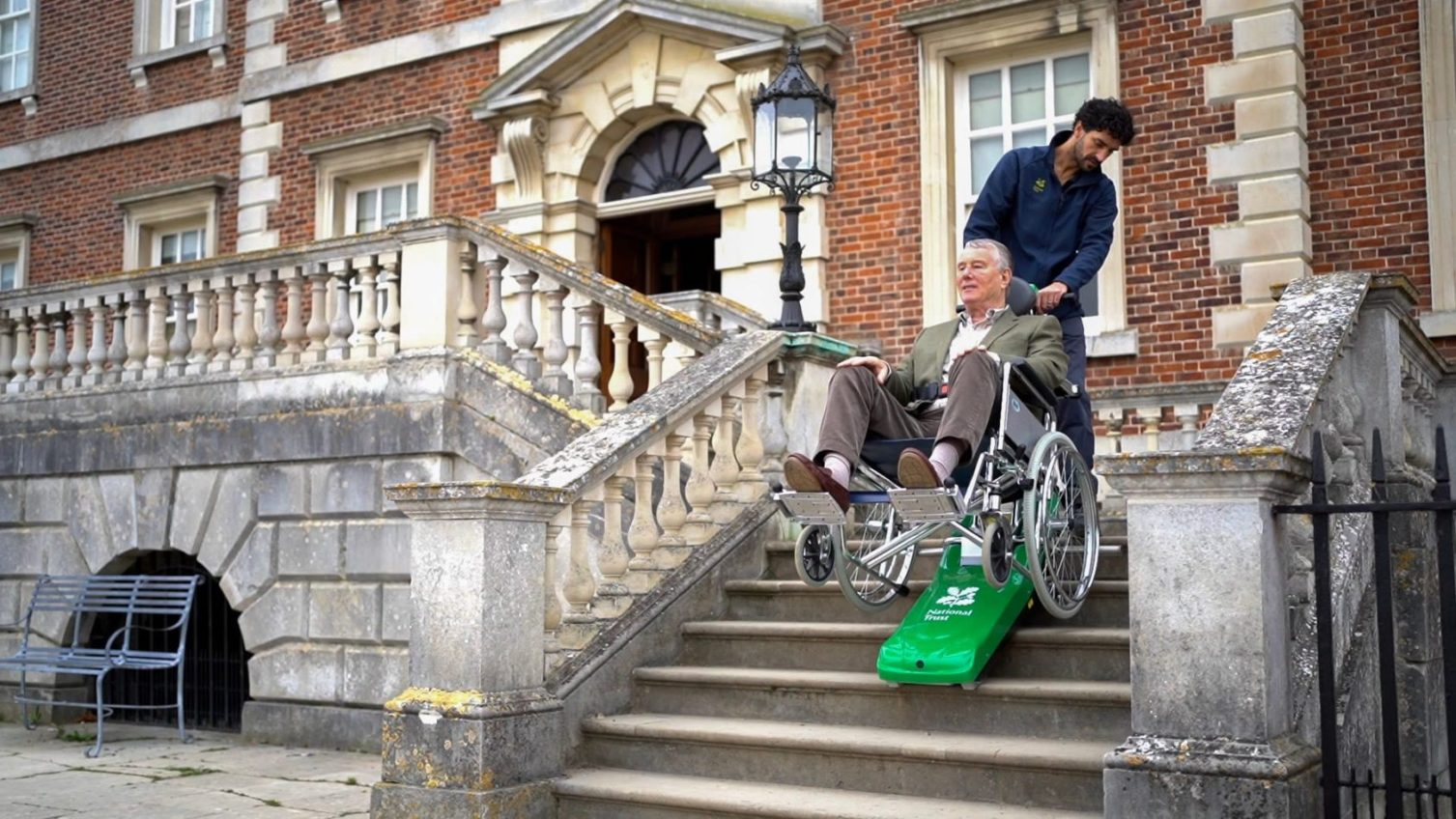
Can Stair Climbers Be A Solution For The Olympia Redevelopment?
The newly redeveloped Olympia Estate in London, a significant project aimed at transforming the area into a dynamic hub for …
The grand stages of the Heritage Network Conference 2025 in Bradford are a perfect setting to discuss a challenge that every heritage professional knows intimately: how do we make our treasured historic buildings accessible to all, without compromising their unique character? While traditional solutions often present a dilemma pitting preservation against inclusivity, a quiet revolution is underway. Electric stairclimbers, once considered niche equipment, are now proving to be a game-changer for heritage sites across the UK.
For centuries, our architectural heritage was built without a thought for modern mobility needs. Winding staircases, grand entrances with a flight of stone steps, and multi-level floor plans are beautiful, but they create a barrier for millions. As custodians of these precious sites, our mission is to preserve them for future generations, but also to ensure they are for everyone, now. The challenge lies in finding a solution that offers a seamless visitor experience without the invasive, often irreversible, structural changes that heritage laws prohibit. This is where the innovative, non-invasive power of electric stairclimbers shines.
Think of the typical options: ramps, platform lifts, or full-scale elevators. These can be transformative, but they come with significant drawbacks in a historic context. Ramps can alter the aesthetic of a facade or a grand hall. Lifts require extensive structural work, a process that can be both prohibitively expensive and a risk to the building’s integrity. The time and cost involved in gaining planning permission for such alterations are often astronomical. These are not just financial hurdles; they are conservation conundrums.
As The Stair Climbing Company, a leading expert in the field, understands well, these projects are complex. “Our work in heritage sites is a delicate balancing act,” says Chris Persey, Operations Director. “We are committed to helping make these places accessible, but we do so with the utmost respect for the building’s history. The beauty of the stairclimber is that it offers a solution that is both immediate and entirely non-permanent.”
The elegance of a portable electric stairclimber is its simplicity. It is not fixed to the building’s fabric. It requires no planning permission for installation, no lengthy construction, and no permanent change to the historic aesthetic. This makes it an ideal choice for sites where building modifications are simply not an option.
Here’s a deeper look at the benefits that make this technology a perfect partner for the heritage sector:
The adoption of electric stairclimbers signals a shift in thinking. It’s a move away from rigid, one-size-fits-all solutions towards flexible, pragmatic approaches that prioritize both conservation and inclusion. By integrating a mobile stairclimber into their operations, heritage sites can communicate a clear message to their visitors: “This building is for you.”
For those attending the Heritage Network Conference 2025 in Bradford, we encourage you to consider this technology not as a compromise, but as a genuine innovation. It is a powerful tool for safeguarding our heritage while unlocking its stories for a broader, more diverse audience.
Further Reading:
Wimpole Hall Case Study by The Stair Climbing Company: https://thestairclimbingcompany.com/case-studies/the-national-trusts-wimpole-estate-case-study/
The National Trust Accessibility Hub: https://www.nationaltrust.org.uk/features/access-for-all
Historic England – Good Practice Guide for Access: https://historicengland.org.uk/advice/caring-for-heritage/places/design-and-access-in-the-historic-environment/